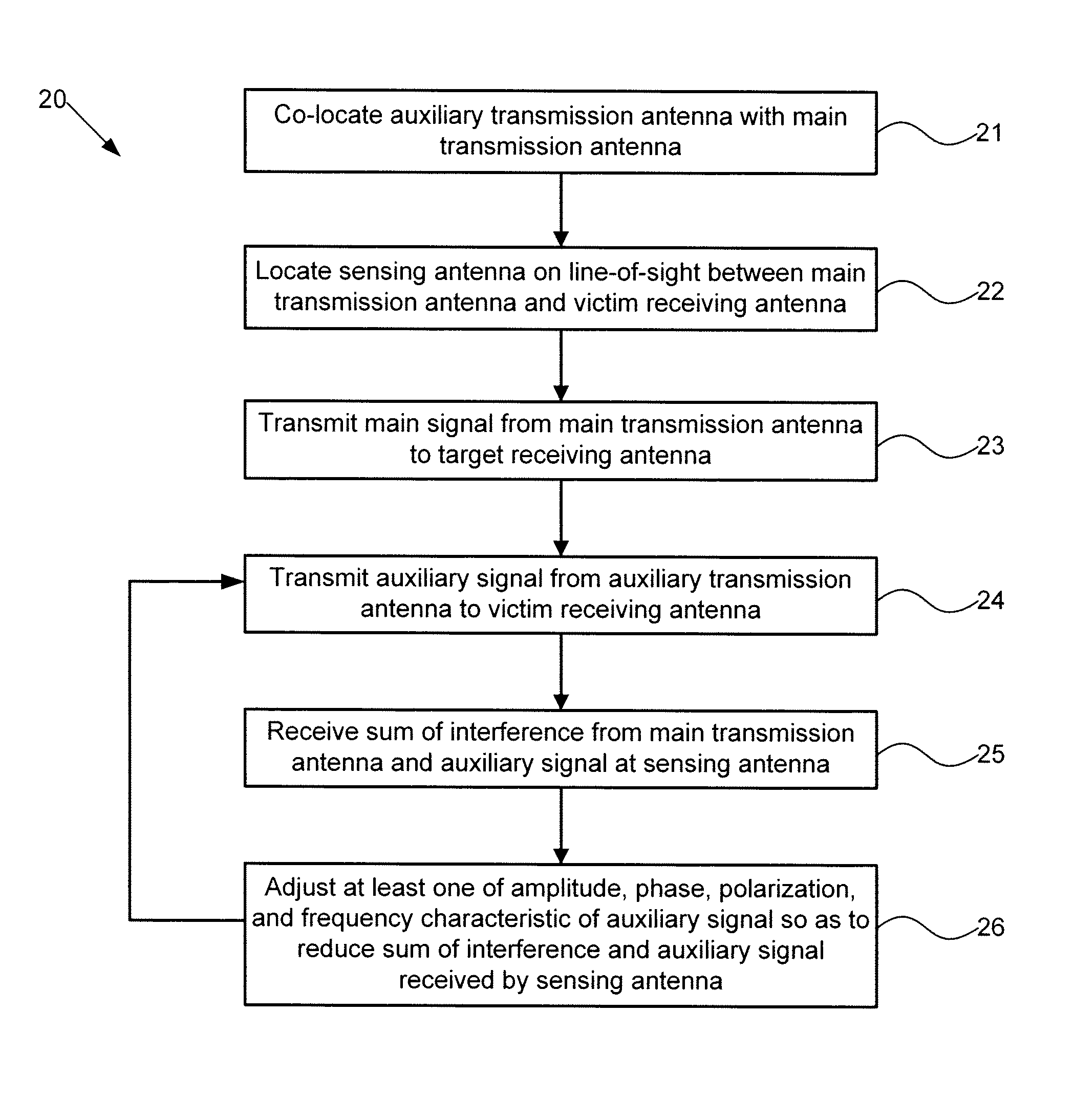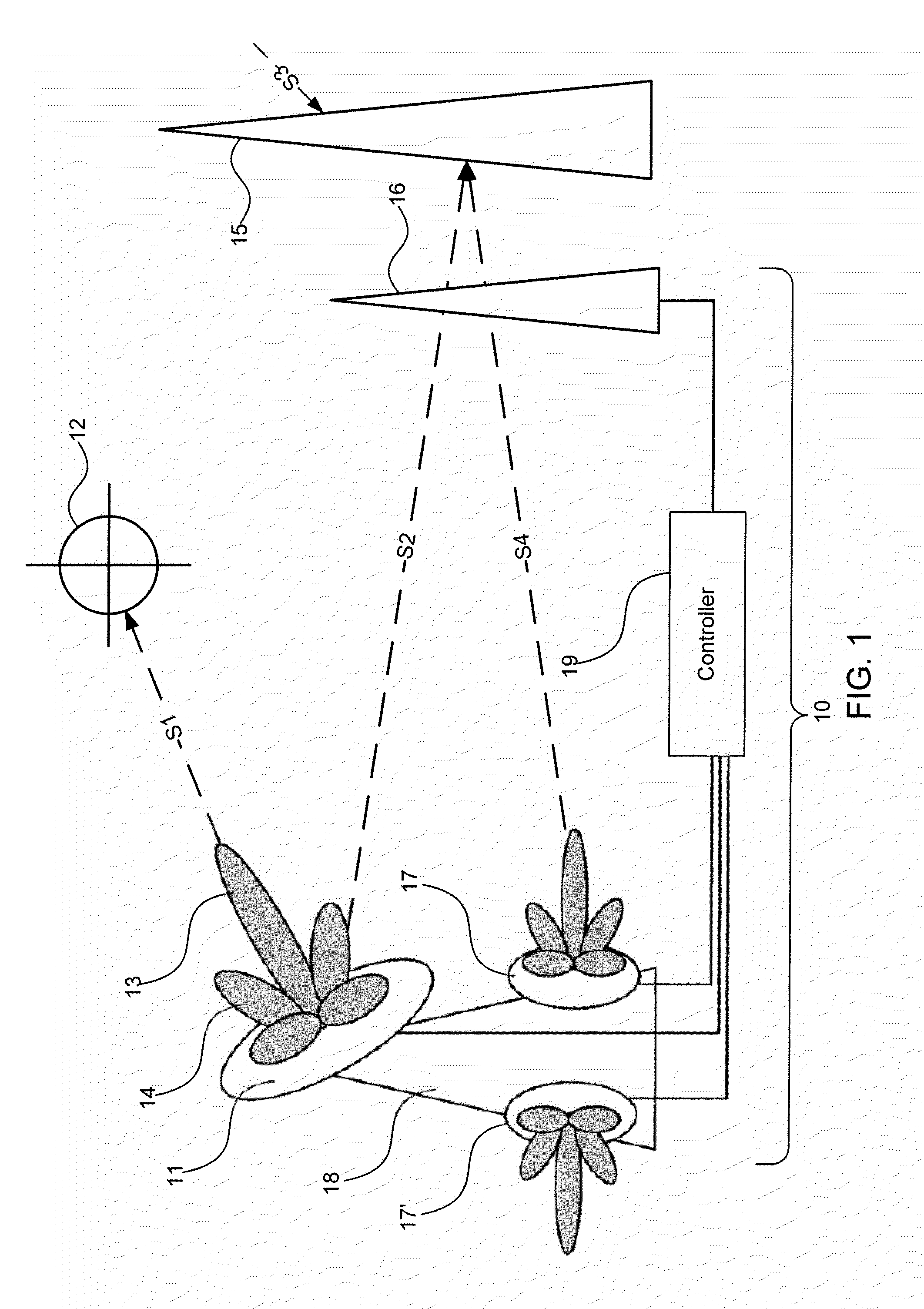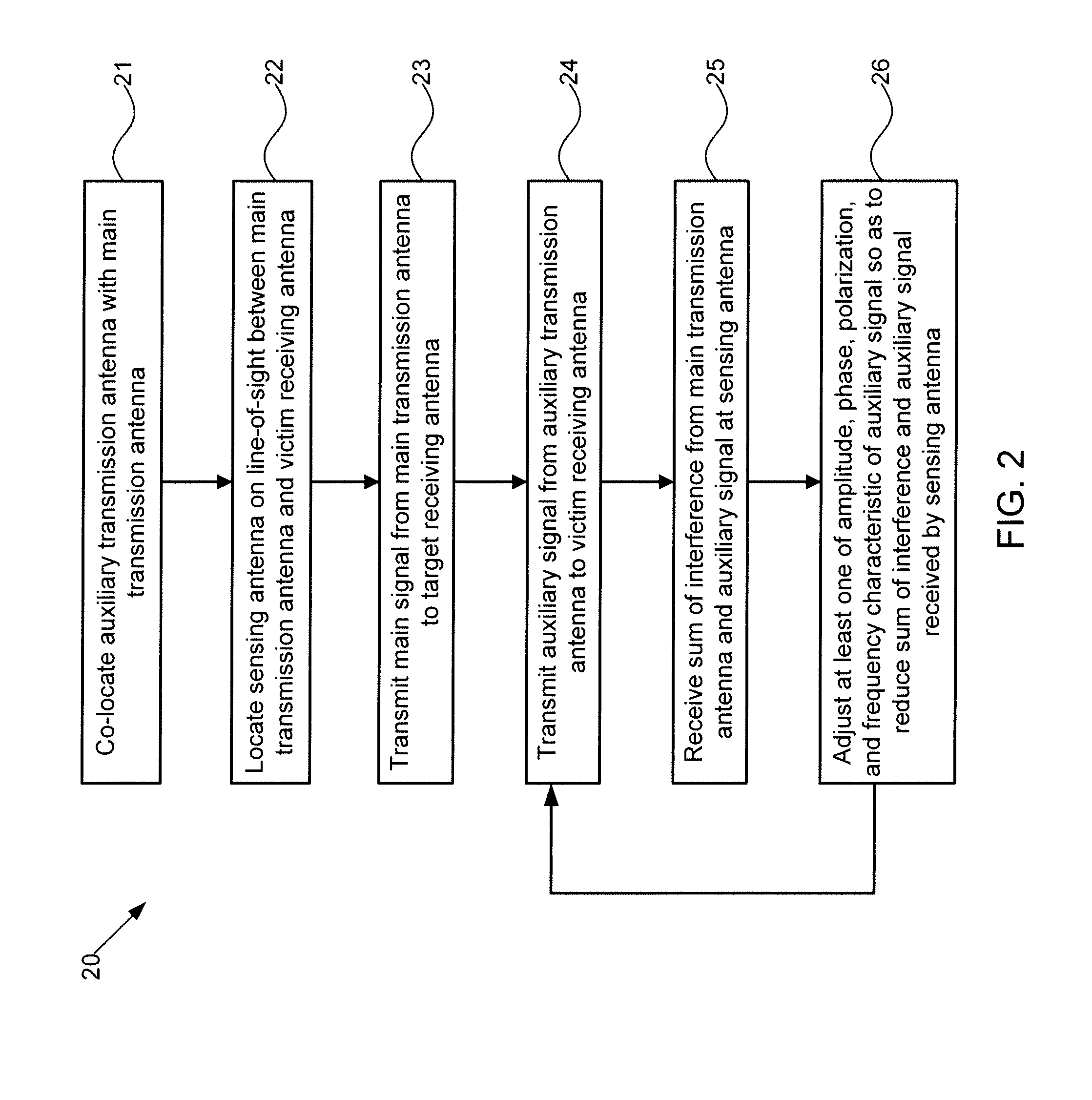Systems and methods for protecting a receiving antenna from interference by a transmitting antenna
a transmitting antenna and receiving antenna technology, applied in direction finders, direction finders using radio waves, instruments, etc., can solve the problems of other signals in the environment, such as those intended for the victim antenna, not being coherent with the signals from the main and auxiliary antennas, so as to reduce the sum of interference and reduce the interference to the victim antenna
- Summary
- Abstract
- Description
- Claims
- Application Information
AI Technical Summary
Benefits of technology
Problems solved by technology
Method used
Image
Examples
Embodiment Construction
Overview
[0018]Embodiments of the present invention provide systems and methods for protecting a victim antenna from interference by a transmission antenna. As described in greater detail below, an auxiliary antenna is co-located with the transmission antenna, and a sensing antenna is located on the line-of-sight between the transmission and victim antennas. The sensing antenna is configured so as to receive approximately the same signals as does the victim antenna. As the transmission antenna transmits a signal to a target, the sensing antenna receives approximately the same amplitude, phase, polarization, and frequency content of interference as does the victim antenna. Based on the interference received by the sensing antenna, the auxiliary antenna generates a signal that reduces or cancels that interference, without significantly impairing the main signal transmitted from the transmission antenna to its target. Coordination between the sensing and auxiliary antennas may be achiev...
PUM
 Login to View More
Login to View More Abstract
Description
Claims
Application Information
 Login to View More
Login to View More - R&D
- Intellectual Property
- Life Sciences
- Materials
- Tech Scout
- Unparalleled Data Quality
- Higher Quality Content
- 60% Fewer Hallucinations
Browse by: Latest US Patents, China's latest patents, Technical Efficacy Thesaurus, Application Domain, Technology Topic, Popular Technical Reports.
© 2025 PatSnap. All rights reserved.Legal|Privacy policy|Modern Slavery Act Transparency Statement|Sitemap|About US| Contact US: help@patsnap.com



